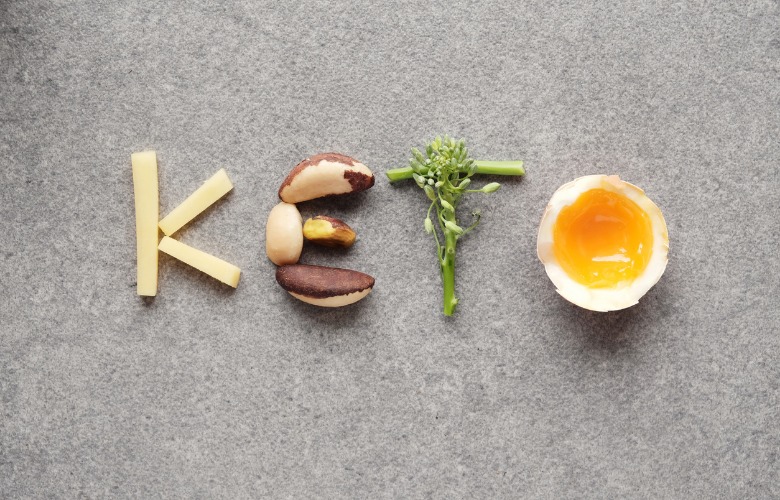What is a Ketogenic Diet?
Believe it or not, the ketogenic diet has been around for close to a century. In the early 1920s, a physician at the Mayo Clinic, Dr. Russell Wilder, established a specific way of eating to help patients regulate their metabolic systems, with the ultimate goal of helping to combat epilepsy.
In fact, a recent study has established a causal link between gut bacteria and the anti-seizure effects of the ketogenic diet.
Basics
A ketogenic diet is one that is high in fats, moderate in proteins and very low in carbs. In that sense, it is akin to the Atkins diet. The premise behind this way of eating is to help your body use fat rather than sugar as its main fuel source. When we eat too many sugary or carbohydrate-laden foods, (something typical of the American diet), our bodies lose the ability to burn fat.
Too much dietary sugar is linked to spikes in blood sugar, inflammation, and potentially other metabolic diseases.
Thus, a ketogenic diet aids the body in releasing ketones into the bloodstream. To do so, the body needs to have enough fat while simultaneously depleting glucose—only then can fat burning begin.
Ketosis is a metabolic state that happens when you feed your body very low amounts of sugars and carbohydrates, forcing your body to rely on fat for fuel.
Foods to Eat—and Not to Eat
If you’ve ever followed a low carb diet, you should have some inkling of what foods are on the no-no list. For example, bread, pasta, potatoes, rice, grains, and legumes are obvious restricted food categories as is anything that has high sugar content. Beer and soda are pretty much off-limits as are starchy vegetables and carb-heavy fruits.
But a ketogenic diet is more than just a low carb diet; rather, it compels you to eat a high amount of fatty foods—you know, just like the ones that your doctor, and common sense, has told you to avoid.
Not all fats are created equal, though; the fats emphasized in Keto are among the healthiest. For example, olive oil, avocado oil, and coconut oil are good to go, as are many seeds and nuts, though some are limited to occasional or not at all. Walnuts? Greenlight. Pumpkin seeds? Yellow light. Cashews? Red light. If the thought of giving up peanut butter is painful, be comforted in knowing you eat have almond or hazelnut butter—at times.
Proteins are the second category of allowable foods. There are practically no limits on certain types of meats and fish, such as salmon, crab, pork, beef, lamb, organ meat and full-fat dairy. Other proteins are to be eaten less frequently, such as eggs, tofu, white poultry, and bacon, while some, such as lunchmeats, is off-limits.
Low carb vegetables are Keto-friendly, such as leafy greens, celery, summer squash, asparagus, and cauliflower, but limit the starchier vegetables, such as, you guessed it, corn and potatoes, along with winter squash and beets.
Fruits are, of course, natural sources of sugar, so while certain fruits, such as blackberries, raspberries, strawberries, avocado, and honeydew get the green light (once in a while), other certain fruits are red-lighted; these include blueberries, plums, apples, cantaloupe, peaches, bananas, pineapple, cherries and more.
Finally, the carbs—so many carbs, so little permitted. No beans (except for the occasional white kidney, edamame, and black soybeans), no quinoa, no wheat, rice, rye, lentils, peanuts, oats, even popcorn. For some people, that might be the most difficult sacrifice of all.
You might be surprised to know that even some spices are limited, such as turmeric and ginger, though salt, pepper, paprika, and full-fat mayonnaise are A-OK.
It takes some time to figure it all out. Fortunately, there are many Keto cookbooks and online recipes that are Keto-friendly.
Ketogenic Diet Effects
A ketogenic diet may be very helpful in the short run for burning fat and losing weight. Though it is not intended to be an eating plan that one should stay on forever, it is noteworthy that a 2004 study showed that obese patients who followed the ketogenic diet for a 24-week period achieved numerous health benefits, including decreases in triglycerides, glucose and LDL cholesterol, and an increase in HDL cholesterol. The study negated the notion that a high fat diet could increase the risk of obesity-related diseases such as diabetes and coronary artery disease.
Another recent study warned, however, not to follow the ketogenic diet for too long a period of time.
As this may be a pretty drastic change in the way that you eat, always consult with a physician before diving in, as there are many variations of the diet. Should you start to see results, ask for how long you can safely stay on it.
References
Christine A. Olson, Helen E. Vuong, Jessica M. Yano, Qingxing Y. Liang, David J. Nusbaum, Elaine Y. Hsiao. The Gut Microbiota Mediates the Anti-Seizure Effects of the Ketogenic Diet. Cell, 2018
Palsdottir, Hrefna. “What Is Ketosis, and Is It Healthy?”. Healthline.com 3 Jun 2017. Web.
Hussein M Dashti, MD PhD FICS FACS,1 Thazhumpal C Mathew, MSc PhD FRCPath,4 Talib Hussein, MB ChB,5 Sami K Asfar, MB ChB MD FRCSEd FACS,1 Abdulla Behbahani, MB ChB FRCS FACSI PhD FICS FACS,1 Mousa A Khoursheed, MB ChB FRCS FICS,1 Hilal M Al-Sayer, MD PhD FICS FACS,1 Yousef Y Bo-Abbas, MD FRCPC,2 and Naji S Al-Zaid, BSc PhD3. “Long-term effects of a ketogenic diet in obese patients”. Exp Clin Cardiol. 2004 Fall; 9(3): 200–205.
BRUECK, HILARY. “This Study on Nearly Half a Million People Has Bad News For The Keto Diet”. Sciencealert.com 21 SEP 2018. Web.

Hilary Daninhirsch is a Pittsburgh-based freelance writer. A former lawyer, she lives with her husband, two redheaded teenage daughters, and a needy terrier. When she’s not writing, she’s probably reading or cheering on one of her daughters at a gymnastics meet or on a stage. Hilary’s online portfolio can be viewed at hilarydaninhirsch.journoportfolio.com



